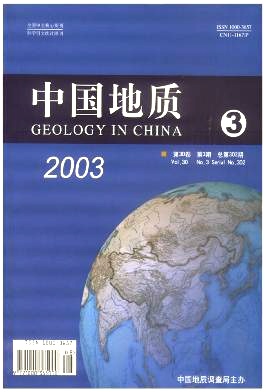BAI Zhi-da, GU De-lin, XU De-bin, ZHAO Guo-chun. Origin of the Duolun ring image, Inner Mongolia[J]. Geology in China, 2003, 30(3): 261-267.
| Citation: |
BAI Zhi-da, GU De-lin, XU De-bin, ZHAO Guo-chun. Origin of the Duolun ring image, Inner Mongolia[J]. Geology in China, 2003, 30(3): 261-267.
|
Origin of the Duolun ring image, Inner Mongolia
-
Abstract
Abstract: The Duolun ring image is found on the border of southeastern Inner Mongolia and Hebei Province. The image is complete, with a diameter of ca. 70 km. There are mainly two views about the genesis of the ring, meteorite impact and Mesozoic paleovolcanic edifice. Through a systematical 1:50000 regional geological survey, the authors found that the trough of the ring is mainly covered by Quaternary deposits, with Pliocene basalts exposed locally. Data of drilling and abnormal magnetic variation show that large amounts of Cretaceous trachyandesite and Pliocene basalt are hidden in the subsurface. Regional faults of all directions are developed at the edges of the ring. Both inside and outside the ring there occur Precambrian metamorphic rocks, Meso- and Neoproterozoic and Lower Permian strata and Mesozoic volcanic-sedimentary rocks. Geologic bodies of different ages are intact with a clear stratigraphic succession. Mesozoic volcanic rocks are the product of a number of eruptions of central or fissure-central types. Therefore, the authors conclude that the Duolun ring may be the result of combined deep-seated magmatism and regional faulting.
-

-
-
Access History







 DownLoad:
DownLoad: